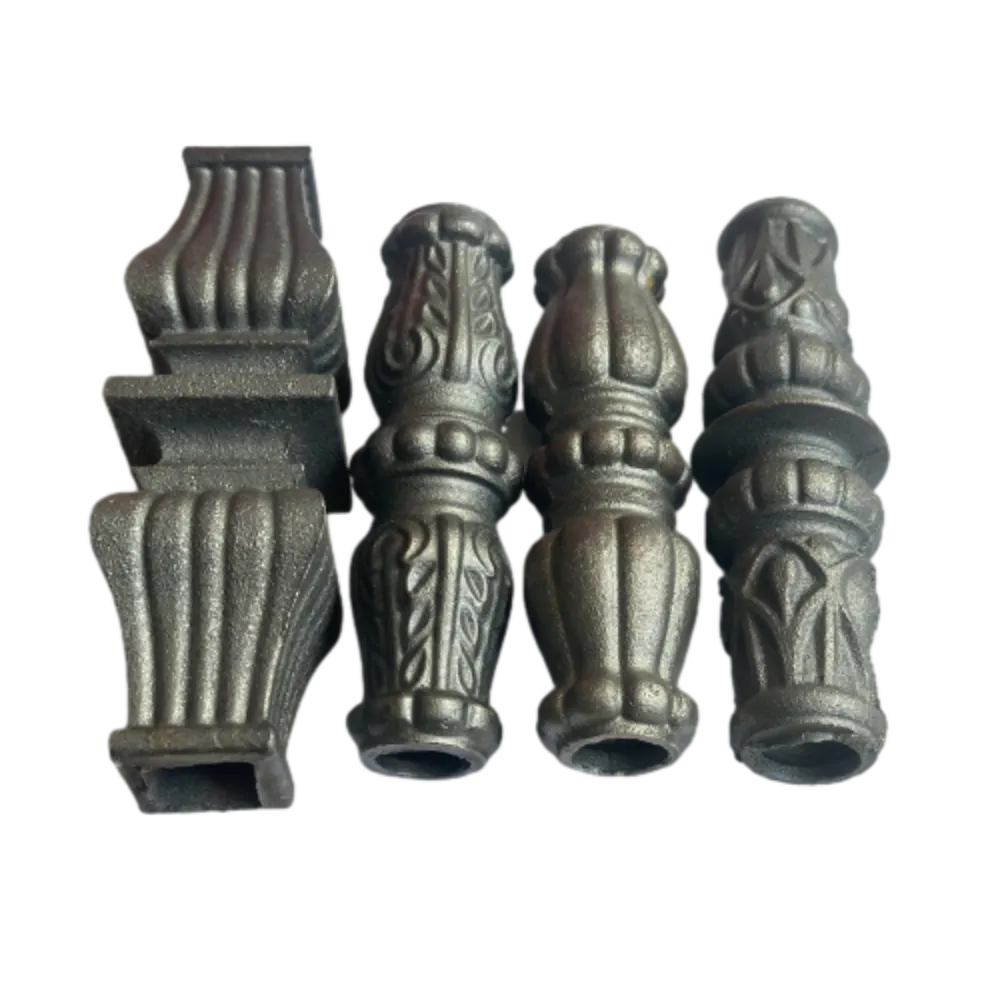ornamental castings
Ornamental Castings A Blend of Art and Functionality
Ornamental castings have long been a staple in the world of design, combining functionality with artistic expression. From architectural elements in historic buildings to modern garden decor, these castings serve both practical purposes and aesthetic appeal. The process of ornamental casting not only showcases the skill of artisans but also reflects cultural and historical contexts.
The History of Ornamental Castings
The art of casting dates back thousands of years. Early civilizations, including the Egyptians and Greeks, utilized various methods of metal casting to create decorative and functional items. The invention of bronze casting during the Bronze Age enabled artisans to produce intricate designs with greater durability and detail than earlier stone or wood carvings. As societies evolved, so did the techniques and materials used in ornamental castings, with advancements leading to the use of iron, aluminum, and even contemporary materials like resin.
During the Victorian era, ornamental castings gained particular popularity. This period saw a surge in decorative architecture, with intricate ironwork embellishing balconies, gates, and railings. The prominence of ornamental ironwork not only showcased the technical prowess of metalworkers but also underscored the growing appreciation for decorative arts in everyday life. These castings provided a way to beautify public spaces and private homes alike, allowing for an expression of individual and collective identities.
The Techniques of Ornamental Casting
The techniques used in ornamental casting have undergone significant developments over the years. Traditional methods include sand casting, investment casting, and lost-wax casting, each offering unique advantages.
1. Sand Casting This method involves creating a mold from sand and pouring molten metal into it. Sand casting is cost-effective and allows for the production of large and complex pieces. Its versatility makes it a popular choice for creating diverse ornamental designs.
ornamental castings

2. Investment Casting Also known as lost-wax casting, this technique involves creating a wax model, which is then coated in a ceramic shell. Once heated, the wax melts away, leaving a precise mold. This method is favored for intricate designs and is often used in jewelry crafting and fine art.
3. Die Casting Commonly used for mass production, die casting involves forcing molten metal into a steel mold under high pressure. This technique is particularly effective for creating uniform pieces rapidly, making it suitable for both decorative elements and functional components.
Contemporary Applications
Today, ornamental castings continue to thrive in modern design. Architects and designers incorporate these elements into various projects, from parks to urban furniture, ensuring that beauty remains integral to functionality. For instance, artistic benches and railings crafted from ornamental castings can enhance outdoor spaces, encouraging people to gather and interact with their environment.
Moreover, sustainability has become a key consideration in the production of ornamental castings. Many artisans and manufacturers are now exploring eco-friendly materials and practices, emphasizing the use of recycled metals and low-energy manufacturing processes. This shift not only addresses environmental concerns but also appeals to a growing demographic of consumers seeking responsible design choices.
Conclusion
Ornamental castings represent a rich tapestry of artistic heritage and innovation. They bridge the gap between functionality and aesthetics, making them a timeless choice for designers around the world. As techniques evolve and sustainability becomes increasingly important, the future of ornamental castings looks promising, preserving the intricate beauty and craftsmanship for generations to come. Whether gracing a historic building or enhancing a contemporary garden, ornamental castings continue to inspire and captivate, proving that art and utility can coexist beautifully.
-
Wrought Iron Components: Timeless Elegance and Structural StrengthNewsJul.28,2025
-
Window Hardware Essentials: Rollers, Handles, and Locking SolutionsNewsJul.28,2025
-
Small Agricultural Processing Machines: Corn Threshers, Cassava Chippers, Grain Peelers & Chaff CuttersNewsJul.28,2025
-
Sliding Rollers: Smooth, Silent, and Built to LastNewsJul.28,2025
-
Cast Iron Stoves: Timeless Heating with Modern EfficiencyNewsJul.28,2025
-
Cast Iron Pipe and Fitting: Durable, Fire-Resistant Solutions for Plumbing and DrainageNewsJul.28,2025
-
 Wrought Iron Components: Timeless Elegance and Structural StrengthJul-28-2025Wrought Iron Components: Timeless Elegance and Structural Strength
Wrought Iron Components: Timeless Elegance and Structural StrengthJul-28-2025Wrought Iron Components: Timeless Elegance and Structural Strength -
 Window Hardware Essentials: Rollers, Handles, and Locking SolutionsJul-28-2025Window Hardware Essentials: Rollers, Handles, and Locking Solutions
Window Hardware Essentials: Rollers, Handles, and Locking SolutionsJul-28-2025Window Hardware Essentials: Rollers, Handles, and Locking Solutions -
 Small Agricultural Processing Machines: Corn Threshers, Cassava Chippers, Grain Peelers & Chaff CuttersJul-28-2025Small Agricultural Processing Machines: Corn Threshers, Cassava Chippers, Grain Peelers & Chaff Cutters
Small Agricultural Processing Machines: Corn Threshers, Cassava Chippers, Grain Peelers & Chaff CuttersJul-28-2025Small Agricultural Processing Machines: Corn Threshers, Cassava Chippers, Grain Peelers & Chaff Cutters












